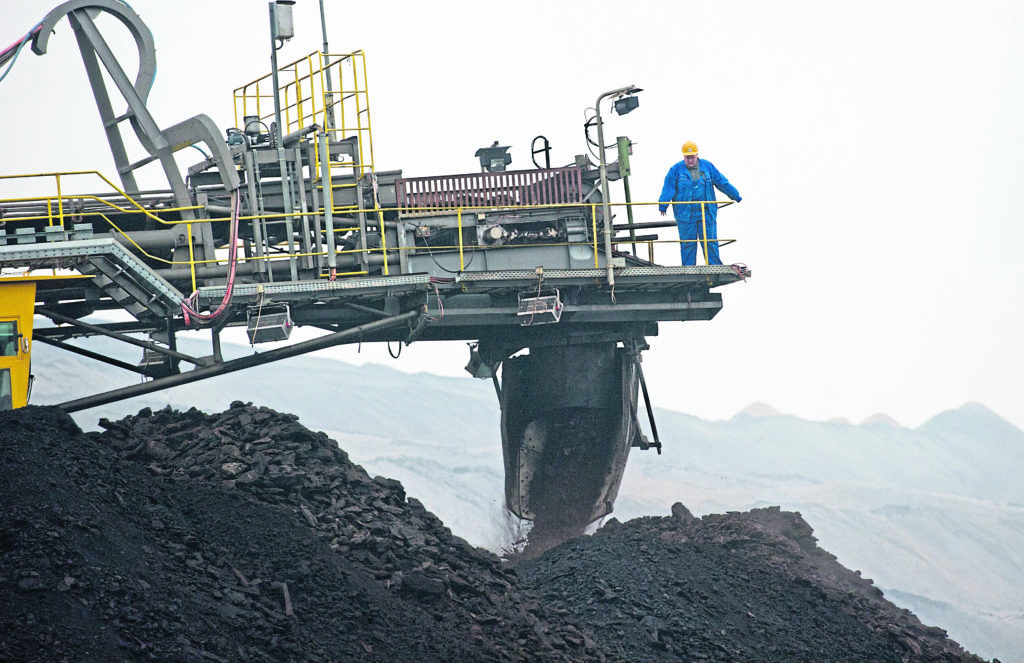
A recent return to Leipzig reminded me why “going green” in Germany has been a lot more difficult than the rhetoric would sometimes suggest.
My previous visit was just after the reunification of Germany in 1990 and the contrast could scarcely be more dramatic.
Then, Leipzig and the surrounding area were an environmental basket case, covered in grime and the land scarred by surface mining for lignite (brown coal) and other minerals.
Now, it is a pretty central European city trying to build its tourism industry around a rich musical heritage.
One story demonstrates the scale of challenge that the Germans faced after reunification. After the oil price spike in the 1970s, the GDR could no longer afford to import from the Soviet Union.
The leadership ordered a massive expansion of brown coal production. Whole towns and villages were relocated and if the Berlin Wall had not fallen, it was intended to evacuate a residential area of Leipzig in order to access a seam of brown coal.
The great majority of the former East German coal industry has long since been shut down out of urgent necessity.
However, Germany as a whole – for there was also a big mining industry in the west – has found it much more difficult to break its historic dependence on coal.
Last year, 44% of electricity was generated from coal compared with 7% in the UK.
In spite of this, Germany has the reputation of having gone green, while the rest of Europe are laggards. In part, this is due to environmental conditions that existed around the time of unification stimulating a more powerful political Green Party than anywhere else in Europe.
They first gained national representation in 1983 and from 1998-2005 were partners with the Social Democrats in a coalition government.
The strength of the Green vote pushed all German political parties in an environmentalist direction including a clean-up of the coal legacy. However, the main Green focus was on closing down the nuclear power industry and gradually all the main German parties bought into this. In 2012, following the Fukushima disaster, Angela Merkel brought forward the date for closing all nuclear plants to 2022.
Over the past 30 years, Germany has been in the vanguard of expanding the use of renewable energy, particularly wind and solar. More than a third of electricity usage now comes from these sources and – unlike in the UK – a valuable new manufacturing sector has been built around them. In spite of this, however, Germany is now destined to miss its targets for reducing carbon emissions.
In large part, the explanation for this comes back to Germany’s continuing attachment to coal. Just as in the UK, there is a contradiction between expanding renewables while failing to make provision for baseload when the sun does not shine and the wind fails to blow.
The German default is coal-fired generation and that reliance is only going to increase as the total shutdown of the nuclear industry approaches.
In a recent report, one EU official was quoted as saying: “Germany, as far as energy policy is concerned, is the biggest fraud globally. The public image of German energy policy is very green, but if you check the data, it’s a different story”. According to McKinsey’s new Energy Transition Index, 11 European countries do better in cutting coal dependency and greening their energy systems.
Throughout the 20th Century, coal was of overwhelming importance to the German economy because there was virtually no indigenous oil or gas. That calculation has not entirely gone away and has created a strategic rationale for not allowing the coal industry to disappear completely – though Angela Merkel is now committed to doing so by 2030.
Germany is the world’s biggest importer of natural gas. It brings in more than 90% of its requirements and the biggest source is Russia.
The likelihood is that this relationship will grow as the nuclear industry declines to the point of extinction and coal continues to be phased out. The only other option – a further massive expansion of renewable generation – does not seem credible.
That scenario prompted US President Donald Trump to make the wild claim that Germany is “controlled” from Moscow because of dependence on Russian gas. In making a sensible point, Mr
Trump managed to undermine it with hyperbole, claiming that 70% of German gas imports come from Russia when the true figure is about half that.
The spat highlighted the political sensitivity of the Nord Stream 2 pipeline which Mr Trump attacked at the summit. This pipeline across the Baltic will double the supply of Russian gas into the heart of Europe and makes complete sense in both economic and energy terms. Its political implications are more complex.
Not only will it increase German and other west European countries’ dependence on Russian gas, it will have a major impact on the fractious relationship between Russia and Ukraine, which continues to be on the transit route for most Russian gas passing into Europe. This trade has been maintained even through all other Russian-Ukrainian stand-offs.
Nord Stream 2 will damage Ukraine economically while reducing any residual interest Russia may have in restoring normal relationships. With gas due to start flowing within a year, these are far from being hypothetical issues and are likely to become more prominent in the months ahead.
It is true that Germany is not as green as it is painted. However, the choices it has made may now be seen as good politics, but also as imprudent energy policy.
Brian Wilson is a former UK energy minister
Recommended for you
